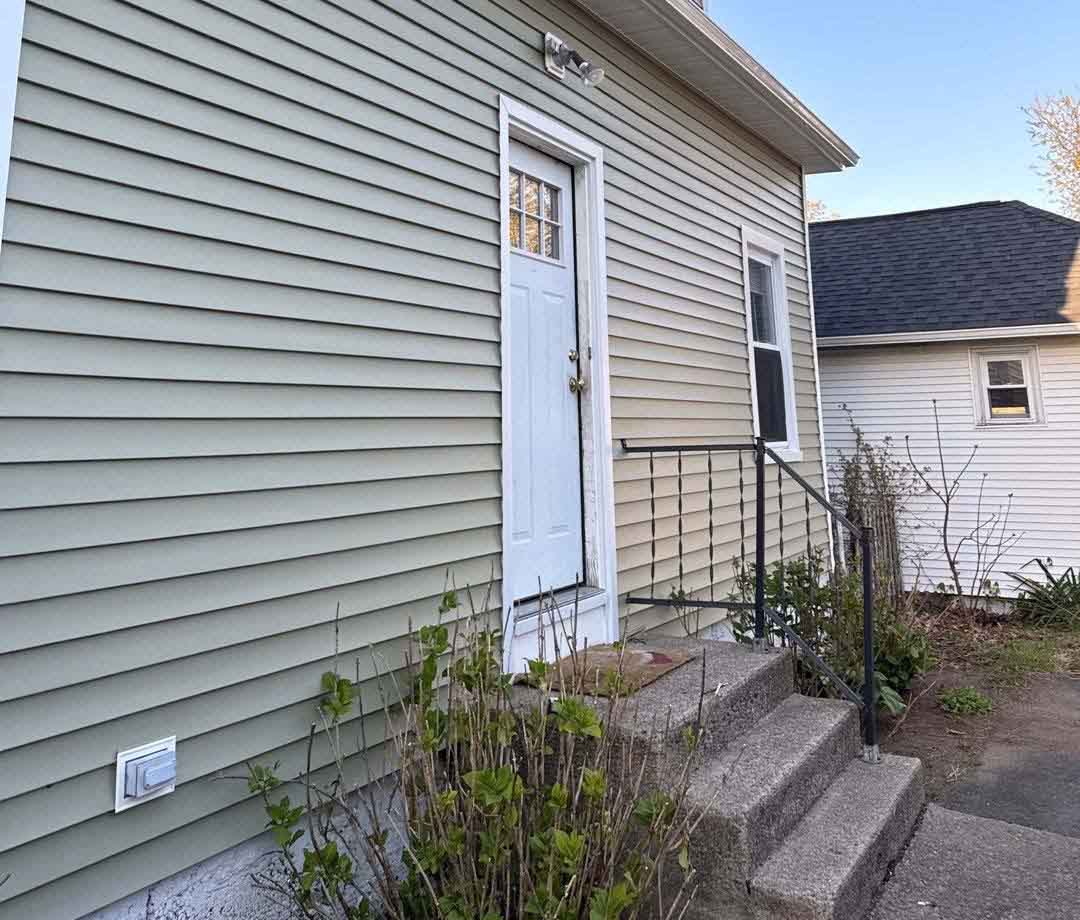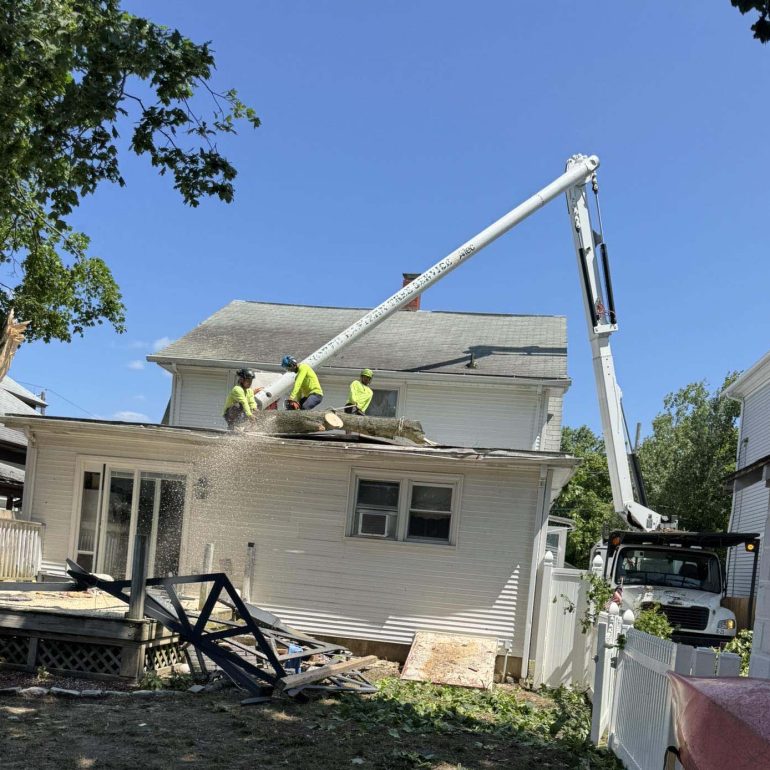Vinyl siding is designed to withstand the elements, but over time, dirt, mildew, algae, and environmental pollutants accumulate on its surface. Understanding what you’re dealing with is the first step toward effective cleaning. Most homeowners notice a gradual dulling of their siding’s appearance, green or black streaks indicating mildew growth, or stubborn stains from sprinklers and landscaping.
The best way to clean vinyl siding starts with a proper assessment of your home’s specific conditions. Different climates and exposures create unique challenges—homes near wooded areas face more mildew, while properties in urban environments contend with pollution and exhaust residue. Regular cleaning not only restores your home’s appearance but also prevents organic growth from causing permanent discoloration or compromising the siding’s protective properties.
For homeowners in CRANSTON, RI, professional services like 757 Exteriors INC offer comprehensive exterior maintenance solutions. Specializing in roofing services, siding, and gutters, their team understands how New England weather affects vinyl siding and provides expert cleaning alongside installation and repair services.
Essential Tools and Materials for Vinyl Siding Cleaning
Before you begin any cleaning project, gathering the right tools makes the process safer and more effective. For basic vinyl siding maintenance, you’ll need:
- Soft-bristle brush or long-handled car washing brush – Essential for gentle scrubbing without scratching
- Garden hose with spray nozzle – Provides adequate water pressure for rinsing
- Bucket for cleaning solution – Mixing your cleaner properly ensures effectiveness
- Safety equipment – Gloves, safety glasses, and sturdy ladder with stabilizer
- Cleaning solutions – Mild detergent, specialized vinyl siding cleaner, or DIY mixture
The tools you choose directly impact your results. Avoid abrasive scrubbers, steel wool, or harsh brushes that can scratch vinyl’s surface, creating texture where dirt accumulates more easily. Similarly, pressure washers require careful handling—while effective, improper use can force water behind siding panels, leading to moisture damage and mold growth inside your walls.
Professional-grade equipment offers advantages that DIY methods can’t match. Soft-wash systems used by experienced siding service professionals deliver consistent, low-pressure cleaning with specialized detergents that break down organic growth without harsh scrubbing. These systems clean more thoroughly while protecting your siding’s finish and your home’s structural integrity.
💡 Expert Tip: Timing Your Cleaning Project
The best time to clean vinyl siding is during mild, overcast days when temperatures range between 50-70°F. Avoid cleaning in direct sunlight, as cleaning solutions can dry too quickly and leave streaks. Early morning or late afternoon provides ideal conditions. Spring and fall are optimal seasons—spring removes winter grime before summer, while fall prepares your home for winter weather.
The Safest DIY Cleaning Method: Step-by-Step
For homeowners tackling the project themselves, following a systematic approach ensures thorough cleaning without damage. This method works well for annual maintenance when siding shows light to moderate soiling.
Step 1: Preparation and Safety Begin by closing all windows and doors. Cover outdoor electrical outlets, light fixtures, and landscaping near your home. Set up your ladder on stable, level ground with a standoff stabilizer to avoid damaging gutters or siding. Never lean ladders directly against vinyl siding.
Step 2: Create Your Cleaning Solution Mix a gentle cleaning solution using one of these proven formulas:
- 70% water + 30% white vinegar (for light cleaning and mildew)
- 1/3 cup laundry detergent + 2/3 cup household cleaner + 1 gallon of water
- Commercial vinyl siding cleaner mixed according to manufacturer directions
Step 3: Work from Bottom to Top Contrary to intuition, start at the bottom and work upward. This prevents streaking—dirty water running down clean surfaces creates harder-to-remove streaks. Apply your cleaning solution generously with a soft brush, working in sections about 5-10 feet wide.
Step 4: Gentle Scrubbing Technique Use horizontal strokes following the panel direction. Apply moderate pressure—you’re removing surface dirt, not scraping paint. Pay extra attention to textured areas and seams where dirt accumulates. For stubborn spots, let the solution sit for 5-10 minutes before scrubbing again.
Step 5: Thorough Rinsing Rinse from top to bottom using your garden hose with a spray nozzle. Ensure all cleaning solution is removed, as residue attracts dirt. Work methodically to avoid missing sections. Proper rinsing prevents streaking and ensures your siding dries evenly.
Those considering new siding or concerned about existing damage should explore professional siding installation options that combine advanced materials with expert craftsmanship.
Tackling Tough Stains and Mildew
Sometimes gentle cleaning isn’t enough. Specific stains require targeted approaches to restore your siding’s appearance without causing damage.
Mildew and Algae Removal Black or green streaks indicate mildew or algae growth, common on north-facing walls or shaded areas. A solution of 30% vinegar and 70% water often works for light growth. For heavier infestations, oxygen bleach (not chlorine bleach, which can damage vinyl) mixed according to package directions provides effective treatment. Apply, let sit for 10-15 minutes, scrub gently, and rinse thoroughly.
Rust Stains Rust stains from lawn furniture, metal decorations, or irrigation systems require specialized treatment. Commercial rust removers designed for vinyl work best—test in an inconspicuous area first. Never use metal brushes or harsh abrasives on rust stains.
Paint and Tar Paint splatters happen during trim work or deck staining. For water-based paint, soap and water work if caught early. Dried paint may require a specialized vinyl-safe paint remover. Tar and asphalt require mineral spirits applied carefully with a soft cloth—use sparingly and rinse immediately.
Gutter Stains Dark vertical streaks below gutters result from dirty water overflow. These oxidation stains need products specifically formulated for “tiger striping.” Regular gutter cleaning prevents these difficult stains from forming.
Cleaning Method Comparison
When stains persist despite your best efforts, damaged siding may be the underlying issue. Professional siding repair services can identify and address structural problems that cleaning alone can’t solve.
Pressure Washing: Proceed with Caution
Pressure washers offer powerful cleaning capability but demand respect and proper technique. Many homeowners damage their siding by using excessive pressure or incorrect angles. If you choose this method, understanding the risks and proper procedures is essential.
Pressure Settings Matter Vinyl siding requires low pressure—never exceed 1,500 PSI, and 1,200 PSI is safer. Use a wide-angle (25-40 degree) nozzle tip. Narrow tips concentrate pressure that can crack siding, force water behind panels, or strip the finish. Always test your settings on an inconspicuous area first.
Proper Angle and Distance Hold the wand at a slight downward angle, never spraying upward under panel edges where water can penetrate. Maintain at least 12-18 inches distance from the siding surface. Closer distances increase damage risk significantly. Move the wand in smooth, overlapping passes.
What Can Go Wrong Improper pressure washing causes several problems: water intrusion behind siding leading to mold and rot, dents or cracks in vinyl panels, removal of the protective finish causing premature fading, and damage to caulking around windows and doors. These repairs often cost more than professional cleaning would have.
Professional Alternative Professionals use soft-wash systems that apply cleaning solutions at low pressure, allowing chemicals to do the work rather than force. This approach cleans more thoroughly while eliminating the risks associated with high-pressure equipment. For comprehensive exterior maintenance, specialized vinyl siding services provide expertise that protects your investment.
Preventive Maintenance: Keeping Siding Cleaner Longer
The best way to clean vinyl siding includes preventive strategies that reduce how often deep cleaning becomes necessary. Smart maintenance extends the time between major cleaning projects and preserves your siding’s appearance.
Establish a Cleaning Schedule
- Light rinse with garden hose: Monthly during growing season
- Spot cleaning problem areas: Quarterly
- Complete washing: Annually or bi-annually depending on conditions
- Professional deep cleaning: Every 2-3 years
Trim Vegetation Keep trees and shrubs trimmed back at least 12-18 inches from siding. This improves air circulation, reduces moisture retention, and minimizes organic debris accumulation. Overhanging branches deposit leaves and sap while creating shade where mildew thrives.
Address Gutter Issues Clean gutters prevent overflow that causes those stubborn vertical stains. Properly functioning gutters direct water away from siding rather than cascading over edges. Consider gutter guards if debris accumulation is a recurring problem.
Control Sprinklers Adjust lawn irrigation to avoid spraying siding directly. Mineral-rich water leaves deposits that build up over time, creating white or brown stains. If sprinkler contact is unavoidable, rinse those areas with clean water weekly.
Quick Response to Stains Address spills, splatters, and stains promptly. Fresh stains remove easily, while old ones bond to the vinyl surface. Keep a spray bottle with diluted vinegar solution handy for quick spot treatment.
When to Call Professional Cleaners
While DIY cleaning handles routine maintenance effectively, certain situations warrant professional expertise. Recognizing when to call in experts saves time, prevents damage, and ensures superior results.
Height and Safety Concerns Two-story homes or properties with difficult access points pose significant safety risks. Professionals have the equipment, training, and insurance to work safely at heights. If you’re uncomfortable on ladders or lack proper safety equipment, professional cleaning is the wise choice.
Stubborn Stains and Extensive Mildew When standard cleaning methods fail or mildew covers large areas, professional-grade equipment and solutions become necessary. Experts have access to specialized products not available to consumers and know how to apply them safely.
Time and Physical Limitations Cleaning a full house exterior is physically demanding and time-consuming. Professional crews complete in hours what might take homeowners an entire weekend. For those with physical limitations, busy schedules, or simply better uses of their time, professional services offer excellent value.
Pre-Sale Preparation Maximizing curb appeal before listing your home justifies professional cleaning. The investment returns multiples in perceived value and faster sales. First impressions matter, and professionally cleaned exteriors photograph beautifully for listings.
Damage Assessment Needs If you notice warping, cracks, loose panels, or water stains on interior walls, schedule a professional inspection. These signs suggest problems beyond simple cleaning. Combining inspection with cleaning ensures comprehensive care. Request a free estimate to understand both your cleaning needs and any underlying issues requiring attention.
🔍 Myth vs. Fact: Vinyl Siding Cleaning
Myth: Vinyl siding is maintenance-free and never needs cleaning.
Fact: While vinyl requires less maintenance than wood, it still accumulates dirt, mildew, and stains that require regular cleaning to maintain appearance and longevity.
Myth: Bleach is always the best solution for cleaning vinyl siding.
Fact: Chlorine bleach can damage vinyl and harm landscaping. Oxygen bleach or vinegar solutions are safer alternatives that clean effectively without risks.
Myth: Pressure washing is always better than hand scrubbing.
Fact: Improper pressure washing causes more damage than it prevents. Hand scrubbing or professional soft-wash systems are safer for vinyl siding and often produce better results.
Environmental Considerations and Eco-Friendly Options
Modern homeowners increasingly prioritize environmental impact in their maintenance decisions. Cleaning vinyl siding can be accomplished with minimal environmental footprint through thoughtful product selection and technique.
Biodegradable Cleaning Solutions Many effective cleaners use plant-based ingredients that break down naturally without harming soil or waterways. White vinegar, a natural acid, kills mildew and dissolves dirt without toxic residues. Oxygen bleach provides powerful cleaning using hydrogen peroxide that decomposes into water and oxygen.
Water Conservation Traditional cleaning methods can waste significant water. Use a shut-off nozzle on your hose to control flow, turning off water while scrubbing. Professional soft-wash systems use less water than DIY methods while achieving better results through chemistry rather than volume.
Protecting Landscaping Pre-wet plants and soil before cleaning, creating a barrier that dilutes any cleaning solution runoff. Cover delicate plants with plastic sheeting. After cleaning, rinse vegetation thoroughly. Choose plant-safe cleaning products when possible—vinegar-based solutions pose minimal risk to most landscaping.
Proper Disposal Never allow concentrated cleaning solutions to enter storm drains, which flow directly to waterways. Diluted, biodegradable solutions that rinse from your house pose minimal environmental impact. If using stronger commercial cleaners, collect runoff where possible and dispose according to local regulations.
Maintaining Your Investment Year-Round
Your home’s exterior represents a significant investment deserving proper care throughout the year. Seasonal maintenance keeps siding looking its best while identifying potential problems before they become expensive repairs.
Spring Preparation Spring cleaning removes winter grime, salt residue, and organic debris. Inspect for any panels loosened by freeze-thaw cycles. Check caulking around windows and doors, reapplying where gaps appear. Address any mildew growth before warm weather accelerates spread.
Summer Vigilance Monitor for wasp nests, spider webs, and insect debris that accumulate during summer months. Quick spot cleaning prevents buildup. Check for sun damage or fading, particularly on south and west-facing walls. Excessive fading may indicate aging siding needing replacement.
Fall Protection Autumn cleaning prepares your home for winter while removing leaves, pollen, and summer grime. Clear any debris from between siding panels. Ensure all panels are secure before winter winds arrive. This is an excellent time for professional inspection and cleaning.
Winter Monitoring While deep cleaning isn’t practical in freezing temperatures, visual inspection remains important. Watch for ice dams affecting upper siding. Remove snow buildup against the house that can cause moisture problems. Document any winter damage for spring repair.
The best way to clean vinyl siding integrates into a comprehensive maintenance program that preserves your home’s exterior beauty and structural integrity. This holistic approach prevents problems rather than just reacting to them.
Frequently Asked Questions
How often should I clean my vinyl siding?
Most homes benefit from annual deep cleaning, with quarterly spot cleaning of problem areas. Homes in shaded areas, near trees, or in humid climates may need more frequent attention—every 6-8 months. Monthly rinsing during spring and summer helps maintain appearance between deep cleanings. Professional assessment can determine the ideal schedule for your specific conditions.
Can I use a pressure washer on vinyl siding?
Yes, but with extreme caution. Never exceed 1,500 PSI pressure, use a wide-angle nozzle (25-40 degrees), maintain 12-18 inches distance, and always spray at a downward angle. Never spray upward under panel edges where water can infiltrate. Many professionals recommend soft-wash systems instead, as they achieve superior results with zero risk of water intrusion or surface damage.
What causes black streaks on vinyl siding?
Black or dark green streaks typically indicate mildew or algae growth, which thrives in moisture and shade. These organic growths feed on dirt, pollen, and organic debris on your siding’s surface. North-facing walls and areas under roof overhangs are particularly susceptible. A solution of 30% white vinegar or oxygen bleach removes mildew effectively. Preventing recurrence requires addressing moisture sources and improving air circulation.
Will cleaning damage my vinyl siding’s color or finish?
Proper cleaning methods using appropriate products and techniques won’t damage vinyl. However, harsh chemicals like chlorine bleach, abrasive scrubbers, or excessive pressure can strip the protective finish or cause fading. Stick to mild detergents, soft brushes, and gentle techniques. Quality vinyl siding is designed to withstand proper cleaning throughout its lifespan. If siding shows excessive fading or color loss, it may indicate aging material needing replacement rather than cleaning.
Cleaning Method Comparison
Final Thoughts
Maintaining clean vinyl siding protects your home’s value, enhances curb appeal, and prevents costly damage from organic growth and accumulated debris. Whether you choose DIY methods for routine maintenance or professional services for comprehensive care, regular attention keeps your siding looking new for decades. The best way to clean vinyl siding combines proper technique, appropriate products, and consistent maintenance—an investment that pays dividends in home value and pride of ownership. When you’re ready for expert assistance, 757 Exteriors INC stands ready to deliver the professional results your home deserves.





